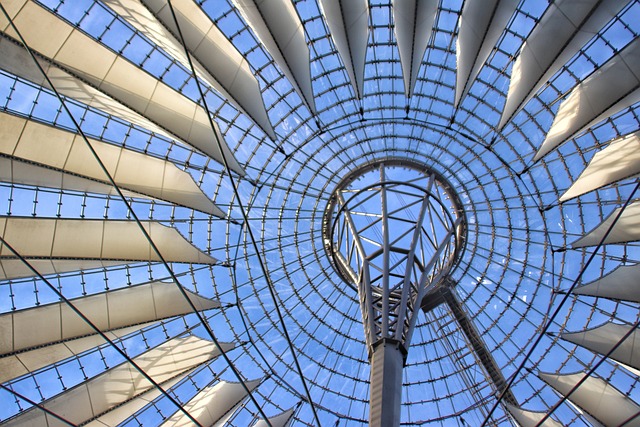Polycarbonate Sheets for Construction and Architecture
Polycarbonate is a versatile thermoplastic widely used in construction for glazing, roofing, and facade systems. Its combination of light transmission, impact resistance, and dimensional stability makes it a practical choice where weight, durability, and ease of installation are priorities. This article explains polycarbonate sheet types, practical uses in building and roof systems, and design considerations for architecture projects.

What is polycarbonate and how it’s made
Polycarbonate is a group of transparent plastics produced by polymerizing bisphenol A (BPA) or other monomers under controlled industrial processes. The result is a material that retains optical clarity while offering greater toughness than many common glazing materials. Sheets come in solid, multiwall (cellular), and corrugated profiles; each profile affects thermal performance, weight, and stiffness. UV-protected surface treatments are commonly applied to extend outdoor durability and resist yellowing.
Beyond raw material chemistry, manufacturing methods such as extrusion and casting determine sheet thickness, surface finish, and available sizes. Extruded multiwall sheets are often chosen for lightweight roofing and translucent walls; solid sheets are used where clarity and scratch resistance are priorities. Understanding these production differences helps specify the right product for a given construction application.
Polycarbonate in construction applications
In construction, polycarbonate sheets are selected for applications that require a balance of strength and lightness. They are used in skylights, canopies, greenhouse glazing, partition walls, and internal screens. Compared with glass, polycarbonate offers superior impact resistance and lower weight, which can reduce supporting structure requirements and simplify handling on site. Its ease of cutting and forming allows installers to adapt sheets to irregular openings and complex geometries.
Thermal performance varies by profile: multiwall polycarbonate traps air in internal chambers, improving insulation compared with single-pane glass. However, polycarbonate has different expansion rates and fire performance characteristics than traditional materials, so correct detailing—sealants, flashings, and fixings—must be planned during design and installation to comply with local building codes and performance requirements.
Using polycarbonate for roof glazing
Polycarbonate roofing is common where daylighting, weather resistance, and impact tolerance are priorities. Corrugated and multiwall sheets are often used on low-slope roofs, pergolas, and light-transmitting awnings. Their light weight reduces load on rafters and purlins, which can be beneficial for retrofits and lightweight building envelopes. Panels are available in varying levels of translucency to control glare and diffuse daylight.
Designers must consider thermal expansion, condensation control, and UV protection for roof installations. Fixing systems typically include oversized fastener holes or slotted rails to allow for movement, and edge flashings or drip trims to prevent water ingress. Properly detailed, polycarbonate roofs can provide durable daylighting while meeting watertightness and safety expectations.
Polycarbonate for building facades and insulation
When used on facades, polycarbonate sheets offer aesthetic and functional options for modern architecture. Translucent multiwall panels can create luminous facades that provide privacy while admitting diffuse daylight. Backlit installations use solid sheets or colored polycarbonate for uniform illumination. Multi-layered systems may incorporate insulation layers or ventilation cavities to improve thermal performance and control solar gain.
Considerations for building facades include fire classification, acoustic performance, and long-term weathering. Multiwall panels provide better insulation than single-layer glazing but generally do not match the thermal resistance of insulated glass units without additional measures. Coordination with facade engineers and local services that specialize in polycarbonate installation will ensure compliance with structural and energy requirements in your area.
Design considerations in architecture
Architects choosing polycarbonate must balance visual, thermal, structural, and lifecycle factors. Color, texture, and light diffusion impact the interior environment and occupant comfort. Structural span tables provided by manufacturers guide maximum unsupported spans based on sheet thickness and load conditions. Acoustic performance may be a concern in noisy environments; adding mass or combining polycarbonate with other materials can improve sound attenuation.
Sustainability considerations include recyclability, embodied energy, and expected service life. Many polycarbonate products are recyclable at end of life, but recycling availability varies by region. UV-stabilized grades and warranties from suppliers can indicate expected longevity in exterior applications. Engaging local services for installation and checking manufacturer recommendations helps ensure reliable performance over the building’s intended lifecycle.
Conclusion
Polycarbonate sheets are a practical material choice in construction, roof glazing, building facades, and architectural design when requirements include impact resistance, light transmission, and lightweight construction. Selecting the right sheet profile, thickness, and protective treatments — and detailing for expansion, weatherproofing, and fire performance — are essential steps. Working with qualified suppliers and installers and reviewing local building codes will help align material selection with project goals and long-term performance.






